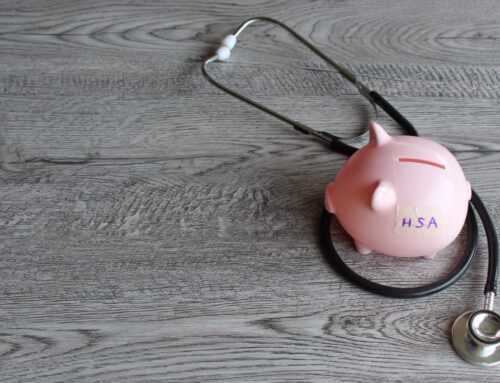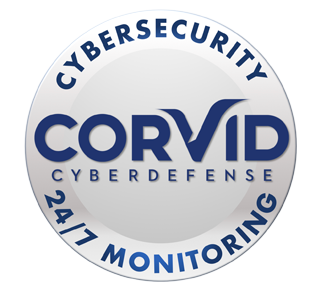 Pre-tax contributions, tax-free withdrawals, and tax-free gains = the Holy Grail of savings opportunities. If you estimate yourself at the 25% tax bracket when you retire, and you put $60,000 into a savings account, you lose $15,000 to taxes; but if you put it in an HSA, you’ll have the same $60,000 when you need it. By not contributing to this account, you could be missing out on tax benefits, as well as the opportunity to build additional savings for your retirement.
Pre-tax contributions, tax-free withdrawals, and tax-free gains = the Holy Grail of savings opportunities. If you estimate yourself at the 25% tax bracket when you retire, and you put $60,000 into a savings account, you lose $15,000 to taxes; but if you put it in an HSA, you’ll have the same $60,000 when you need it. By not contributing to this account, you could be missing out on tax benefits, as well as the opportunity to build additional savings for your retirement.
Tips for using your health savings investment account as a valuable retirement planning tool:
Open an HSA investment account
If your employer doesn’t offer an HSA option or you’re currently not working, you can open your own investment account at most banks or credit unions. When setting up an HSA for retirement savings purposes, look for a bank that provides the best returns. Be cautious, as fees for some investment accounts can be high, so it’s best to read all the fine print and shop around.
Contribute the maximum allowed
If you’re short on time or over age 55, you’re entitled to make catch-up contributions, and with the tax benefits of an HSA, there’s no reason not to do this. Additionally, you’ll want to contribute the maximum possible annually to get the most from this savings opportunity. There aren’t financial limits on an HSA like you experience with an IRA, so save away!
Save your receipts and let your balance grow
If you have the means, pay your bills out-of-pocket until you retire, giving your money the longest time to grow. If you go this route, keep your receipts. Then, when the time comes, you can reimburse yourself for medical expenses via your HSA. This process can come in handy if you happen to retire before your Social Security payments begin.
Everyone’s situation is different, and your retirement investment plans are unique, so give us a call at (540) 720-5656, and we’ll work to help you determine the best route to finding the Holy Grail.
Adapted from U.S.News1



















 Megan Jones joined the ILG Financial team in 2020 as marketing director. Megan and her husband live in Fredericksburg, VA with their German Short Haired Pointer, Gus. Megan is a graduate of Longwood University and holds a degree in communications. Megan is the oldest of Dave Lopez’s three children and not only enjoys working alongside her father, but also with her cousin, Chase, who joined the ILG Financial team in 2020 as an advisor. Megan is also a fully licensed Life, Health, and Annuity agent. When not at work, Megan enjoys sitting on the back porch with family and friends enjoying food and music.
Megan Jones joined the ILG Financial team in 2020 as marketing director. Megan and her husband live in Fredericksburg, VA with their German Short Haired Pointer, Gus. Megan is a graduate of Longwood University and holds a degree in communications. Megan is the oldest of Dave Lopez’s three children and not only enjoys working alongside her father, but also with her cousin, Chase, who joined the ILG Financial team in 2020 as an advisor. Megan is also a fully licensed Life, Health, and Annuity agent. When not at work, Megan enjoys sitting on the back porch with family and friends enjoying food and music. Chase Lopez joined the ILG Financial team in 2020 as an advisor. Chase is a 2016 James Madison University graduate with a degree in management. Chase has been trained under the tutelage of Dave Lopez, who is not only the founder and managing member of ILG Financial, but also is Chase’s uncle and godfather. He also enjoys working alongside his cousin, Megan, who is Dave’s daughter.
Chase Lopez joined the ILG Financial team in 2020 as an advisor. Chase is a 2016 James Madison University graduate with a degree in management. Chase has been trained under the tutelage of Dave Lopez, who is not only the founder and managing member of ILG Financial, but also is Chase’s uncle and godfather. He also enjoys working alongside his cousin, Megan, who is Dave’s daughter. Amy Anderson joined the ILG Financial team in 2023 as the client relations coordinator. Her responsibilities include scheduling of appointments, annual check-up notifications, and annuity and required minimum distribution assistance. She is a graduate of Harding University with a degree in Computer Information Systems. Amy and her husband have two children and she enjoys reading, crocheting, music and spending time with her family.
Amy Anderson joined the ILG Financial team in 2023 as the client relations coordinator. Her responsibilities include scheduling of appointments, annual check-up notifications, and annuity and required minimum distribution assistance. She is a graduate of Harding University with a degree in Computer Information Systems. Amy and her husband have two children and she enjoys reading, crocheting, music and spending time with her family. Jessica Carson joined the ILG Financial team in 2018 as an agent. Jessica and her husband have four children, two dogs, 3 barn cats, 5 chickens, and three parakeets. She indeed loves her children and pets! When not at work, Jessica enjoys playing the piano and cello as well as traveling and spending time outside with her family, hiking, fishing, and boating.
Jessica Carson joined the ILG Financial team in 2018 as an agent. Jessica and her husband have four children, two dogs, 3 barn cats, 5 chickens, and three parakeets. She indeed loves her children and pets! When not at work, Jessica enjoys playing the piano and cello as well as traveling and spending time outside with her family, hiking, fishing, and boating. Terri Center joined the ILG Financial team in 2019 as client services manager. She handles client records, application processing, and gathering information to provide a professional and friendly experience with all of our clients. Terri is a graduate of Oakland University. She is married and has two children. She enjoys hiking, family time, and puzzle challenging video games. She also likes to share her creativity in her canvas paintings and sewing projects.
Terri Center joined the ILG Financial team in 2019 as client services manager. She handles client records, application processing, and gathering information to provide a professional and friendly experience with all of our clients. Terri is a graduate of Oakland University. She is married and has two children. She enjoys hiking, family time, and puzzle challenging video games. She also likes to share her creativity in her canvas paintings and sewing projects.